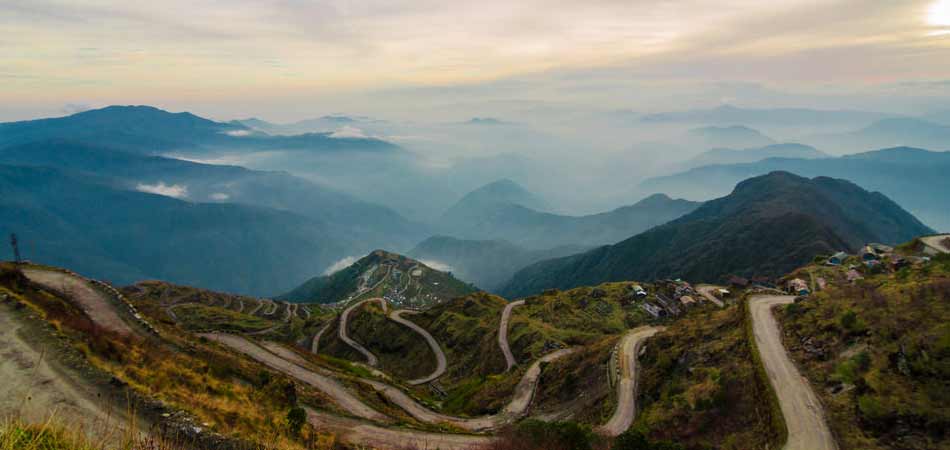The Sikkim Silk Route is an offbeat paradise, a road less traveled that takes you through stunning landscapes, old-world villages, and high-altitude mountain passes.
But when is the best time to visit the Sikkim Silk Route?
Let’s break it down so you can pick the perfect season for your adventure.
Spring (March to May) – A Blooming Wonderland
Spring is a magical time to explore the Sikkim Silk Route.
The weather is pleasant, with temperatures ranging from 10°C to 15°C, making it ideal for sightseeing and trekking.
Rhododendrons and wildflowers paint the hills in vibrant colors, creating a dreamy backdrop.
Why Spring is the Best Time?
- Perfect weather for outdoor activities
- Clear skies and breathtaking views
- Rhododendron blooms make Zuluk and Gnathang Valley surreal
- No extreme cold or excessive rainfall
Planning a spring trip? Check out our curated Sikkim Silk Route trip to experience the best of this season.
Summer (June to August) – The Green Escape
Monsoons hit Sikkim during this period, making the region lush and green.
While the landscapes are at their most picturesque, landslides and roadblocks can be a concern.
Expect misty hills, occasional showers, and an ethereal vibe.
Should You Visit in Summer?
- Greenest landscapes and fewer tourists
- Cloud-kissed hills and dreamy monsoon vibes
- Ideal for those who love solitude and lush greenery
- But: Unpredictable weather and road closures
Autumn (September to November) – Crystal Clear Views
Autumn is arguably the best time to visit the Sikkim Silk Route.
The monsoon clouds clear up, leaving behind crisp, fresh air and clear blue skies.
The temperature hovers between 5°C to 12°C, making it perfect for travelers.
Why Choose Autumn?
- Stunning visibility with uninterrupted mountain views
- Perfect weather for long drives along the winding Silk Route
- Ideal for photography lovers – golden landscapes and starry skies
- Best time for a hassle-free, comfortable trip
Get inspired by our detailed Sikkim travel guide.
Winter (December to February) – Snow Wonderland
If you dream of a winter wonderland, this is your time.
The Sikkim Silk Route transforms into a snowy paradise, but be prepared for extreme cold, with temperatures dropping to -10°C.
Many routes, including the high-altitude Nathang Valley, may be inaccessible due to heavy snowfall.
Why Visit in Winter?
- Experience a magical white landscape
- Fewer tourists, more serenity
- Snow-covered passes and frozen lakes
- But: Harsh cold, limited accessibility
Final Verdict: When Should You Visit Sikkim Silk Route?
If you want the best mix of weather, views, and accessibility, autumn (September-November) is the ideal time to visit the Sikkim Silk Route.
For flower lovers, spring (March-May) is the next best option.
Looking for solitude and winter magic? December-February is your pick, but be prepared for roadblocks.
Check out more about Sikkim and its wonders on our detailed travel page.
FAQs About the Best Time to Visit Sikkim Silk Route
Is October a good time to visit the Sikkim Silk Route?
Yes! October offers the best visibility, pleasant temperatures, and hassle-free travel.
What’s the best season for a bike trip on the Silk Route?
Autumn (September-November) and Spring (March-May) are the safest and most enjoyable seasons for a bike ride.
Can I visit the Silk Route in monsoon?
It’s not recommended due to landslides and unpredictable weather.
Is the Sikkim Silk Route open in winter?
Parts of it remain accessible, but heavy snowfall can lead to road closures.
Plan your adventure with a responsible tourism expert. Visit Kipepeo’s Sikkim Silk Route trip page for a seamless travel experience.

